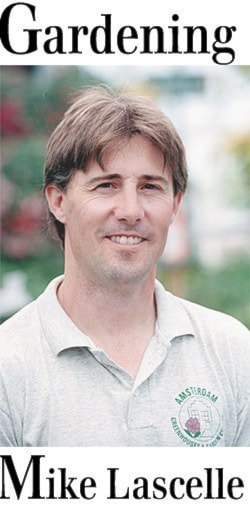Urban legend states that every woman has, in her closet, a little red dress (or something to that effect, like a great blouse or well-tailored pant suit) which hangs, cleaned and pressed, just waiting for that special occasion to come around.
The proverbial little red dress serves just one purpose – it is meant to catch the eye and remind the beholder of what attracted them in the first place. Hence the reason it is often worn during celebrations marking time, such as birthdays and anniversaries.
This same principle also applies to landscape design, particularly older, established gardens that are often overgrown and suffering from an excess of greenery.
Once the barrage of spring colour has past, these landscapes are just a midsummer melange of green conifers, broad-leaved evergreens and deciduous shrubs; or to quote Charlie Brown’s teacher: blah, blah, blah.
The key to rejuvenating these gardens is an infusion of foliar colour rather than flowering plants, as the majority of the latter have only a limited blooming season before they simply revert back to some greenish hue.
Despite my little red dress reference (which served its purpose), the best foliar colour to introduce to a monotone garden is gold. It should be used sparingly, preferably in groups of three or five spread over the entire landscape, with the green plants in between. This means that for the average front yard you could use three gold-leaved features – which might include a small tree (Igolden fullmoon maple/Acer shirasawanum ‘Aureum’), a trio of deciduous shrubs (Spiraea ‘Magic Carpet’, which is gold-leaved by the time it flowers) and perhaps a medium-sized conifer, such as Chamaecyparis ‘Sungold’ or golden threadleafed cypress. Larger properties might up those groupings from three to five, depending on the scale.
There are quite a few manageable golden tree options out there, with a few good choices being ‘Dawyck Gold’ Beech (a columnar form), Acer platanoides ‘Princeton Gold’ (golden Norway maple) and Acer negundo ‘Kelly’s Gold’.
For those living next to green belts dominated by large conifers, it can sometimes help to break the monotony by planting a full-sized golden-leaved shade tree in front, as the dark green background silhouettes it – for this scenario you might want to choose Robinia ‘Frisia’ or Gleditsia ‘Sunburst’, both of which have elegant form and golden compound leaves. Your other option here is to underplant the foreground with a large golden shrub (this works well when the existing canopy sits high) such as the newly introduced Leycesteria formosa ‘Golden Lanterns’ or pheasant berry.
There are a plethora of shrub choices available and quite often they are just gold-leaved versions of plants that we are already familiar with. Choisya is a good example of this, with ‘Sundance’ being the gold version of the species and ‘Goldfinger’ being the golden counterpart of the finer-textured ‘Aztec Pearl’.
Another good option here is ‘Golden Spirit’, a chartreuse cultivar of purple smoke bush featuring reddish-orange autumn tones. This deciduous shrub pairs well with Berberis thunbergii ‘Rose Glow’, a Japanese barberry with rich burgundy foliage and rose-pink veining.
Speaking of which, there is a great gold-version of Japanese barberry called ‘Golden Nugget’. It is less prone to scorch than other forms, reaches heights of only 30 centimetres and has orange fall colour. The semi-dwarf conifer Thuja occidentalis ‘Rheingold’ (can be maintained by pruning to 12 centimtres tall) is a good all-season choice as the soft textured gold foliage picks up bronze-red highlights during the cold winter weather.
Your vine options are limited, but these are still quite effective against homes with dark exteriors or used to highlight areas of your garden dominated by dark green. ‘Fiona Sunrise’ is the gold version of common jasmine (Jasminum officinale) with its fragrant white summer blooms – it requires a sunny, sheltered site. Golden hops (Humulus lupulus ‘Aureus’) is much less fussy, but it has a reputation for spreading by suckers. That said, this perennial vine (it dies back to the ground each year) can reach heights of six metres in a single season and the ability to prune it back makes it easier to maintain our fences or trellises.
Taking us down to the smallest scale of miniature shrubs and perennials, I would like to start with some of the heathers. The brightest of these is Erica cinerea ‘Celebration’, which features ‘electric yellow’ foliage and tiny white blooms – several other good choices would include ‘Golden Sport’ and ‘Mary Helen’, with the latter being a winter heather.
Last but not least on my list is Campanula ‘Dickson’s Gold’, a delightful creeping perennial with contrasting blue bellflowers.
Mike Lascelle is a local nursery manager and gardening author. Email him at hebe_acer@hotmail.com. There are two new stories posted on his blog: Soul of a Gardener.
